Results 10,751 to 10,760 of 12094
Thread: Anandtech News
-
08-31-20, 10:09 AM #10751
Anandtech: Qualcomm Announces Snapdragon 732G: 730G Gets a Speed Bump
Today Qualcomm is announcing an update to its Snapdragon 730G platform, introducing the higher-binned Snapdragon 732G. The new chip gives the platform a slight boost in terms of clock frequencies on the part of the CPU and GPU, and will see a release in the an upcoming POCO device.
The new platform is based on the Snapdragon 730G silicon that was released last year, with Qualcomm boosting the clock frequencies though a higher bin selection. The new chip raises the CPU frequencies of its two Cortex-A76 cores 100MHz to up to 2.3GHz, seemingly retaining the same 1.8GHz clock on the six A55 cores.Qualcomm Snapdragon Upper Mid-Range SoCs SoC Snapdragon 710 Snapdragon 730G Snapdragon 732G CPU 2x Kryo 360 (CA75)
@ 2.2GHz
6x Kryo 360 (CA55)
@ 1.7GHz2x Kryo 470 (CA76)
@ 2.2GHz
6x Kryo 470 (CA55)
@ 1.8GHz2x Kryo 470 (CA76)
@ 2.3GHz
6x Kryo 470 (CA55)
@ 1.8GHzGPU Adreno 616 Adreno 618 Adreno 618 + 15% DSP Hexagon 685 Hexagon 688 ISP/
CameraSpectra 250
32MP single / 20MP dualSpectra 350
36MP single / 22MP dualMemory 2x 16-bit @ 1866MHz
LPDDR4X
14.9GB/s
1MB system cacheIntegrated Modem Snapdragon X15 LTE
(Category 15/13)
DL = 800Mbps
3x20MHz CA, 256-QAM
UL = 150Mbps
2x20MHz CA, 64-QAMEncode/
Decode2160p30, 1080p120
H.264 & H.265
10-bit HDR pipelinesMfc. Process 10nm LPP 8nm LPP
Qualcomm is further raising the clock frequencies of its GPU and the new variant of the chip promises a +15 uptick in performance.
In recent times, Qualcomm has evolved the habit of releasing new platforms based on similar silicon designs, such as the earlier in the year announced Snapdragon 768G, which is a higher speed binned 765G. The new 732G seemingly follows the same product formula of adopting a new model name although it’s really the same silicon.
Today’s announcement also came with a partnership endorsement from POCO, indicating that they are planning to release the first device powered by the Snapdragon 732G, although we don’t have more information or details such as a release date.
Related Reading:- Qualcomm Announces Snapdragon 768G: Higher-bin 765 up to 2.8GHz
- Qualcomm Announces Snapdragon 865 and 765(G): 5G For All in 2020, All The Details
- Qualcomm Goes For The Mid-Range: Snapdragon 765 and 765G
- Qualcomm Announces Snapdragon 665 & 730 Platforms: 11 & 8nm
More...
-
08-31-20, 04:29 PM #10752
Anandtech: Samsung 980 PRO Briefly Listed Online
In what seems to be an accidental leak, a product page for the highly-awaited Samsung 980 PRO SSD was posted and later taken down from Samsung's website for Singapore. The 980 PRO was first previewed in January at CES as their first consumer SSD to support PCIe 4.0, but with very little technical information. No release date was announced but Samsung's PR said to expect more information in Q2.
The timing of this leak is unsurprising: if Samsung was planning for a Q2 or early Q3 release before COVID-19 hit, it makes sense for them to be preparing for a release in the near future. However, this leak brings a few surprise about what kind of product the 980 PRO will be. Since this wasn't an official, coordinated announcement, the specifications revealed may not be final and we still have no indication of pricing or launch date. But the big surprise is that the 980 PRO will apparently be using TLC NAND, a first for Samsung's PRO models. Samsung has been the last holdout offering high-end MLC-based SSDs while the rest of the SSD industry has moved on to TLC (and QLC), for both consumer and enterprise markets. Samsung provided an early indication that they may finally be abandoning MLC NAND in early 2019 when the TLC-based 970 EVO was replaced with the 970 EVO Plus, a refresh that switched from 64L to 92L TLC. There was never any sign of a corresponding 970 PRO Plus model in the works.
The switch from MLC to TLC means the rated write endurance of the 980 PRO will be half that of the 970 PRO and equivalent to the TLC-based 970 EVO and EVO Plus. The upside is that the 980 PRO may be more competitively priced against other high-end consumer NVMe SSDs. It's also quite possible that Samsung needed to introduce SLC caching in order to hit the 5GB/s write speeds they're promising for the 980 PRO.
The product page for the 980 PRO indicated that sequential read speed is now planned to be 7 GB/s, an improvement over the 6.5 GB/s listed earlier this year at CES. We also get our first look at random IO specifications, with the 1TB model hitting a maximum of 1M IOPS for either reads or writes. Performance at a queue depth of 1 is slightly improved over the 970 PRO and 970 EVO Plus, and post-cache sequential write speeds are also up from the 970 EVO Plus. This points to the 980 PRO as likely using Samsung's 1xx-layer 3D TLC rather than the 92L used in the 970 EVO Plus.Samsung High-End NVMe SSD Comparison Model 980 PRO 970 PRO 970 EVO Plus Capacities 250 GB
500 GB
1000 GB512 GB
1024 GB250 GB
500 GB
1000 GB
2000 GBInterface PCIe 4 x4
NVMe 1.3PCIe 3 x4
NVMe 1.3PCIe 3 x4
NVMe 1.3Form Factor M.2 2280 Single-sided Controller Samsung Elpis Samsung Phoenix Samsung Phoenix NAND 3D TLC 64L MLC 92L TLC SLC Write Caching Yes No Yes Specifications below are for 1TB models specifically Sequential Read 7000 MB/s 3500 MB/s 3500 MB/s Sequential Write 5000 MB/s (SLC)
2000 MB/s (TLC)2700 MB/s 3300 MB/s (SLC)
1700 MB/s (TLC)Random Read
(4kB)QD1 22k IOPS 15k IOPS 19k IOPS Max 1M IOPS 500k IOPS 600k IOPS Random Write
(4kB)QD1 60k IOPS 55k IOPS 60k IOPS Max 1M IOPS 500k IOPS 550k IOPS (SLC)
400k IOPS (TLC)Active Power 6.2 W (Average)
8.9 W (Burst)5.2 W (Read)
5.7 W (Write)5.5 W (Read)
6.0 W (Write)Write Endurance 600 TB
0.3 DWPD1200 TB
0.66 DWPD600 TB
0.3 DWPDWarranty 5 years 5 years 5 years Launch Date 2020? May 2018 January 2019 Launch MSRP TBD $629.99
(62¢/GB)$249.99
(25¢/GB)
Power consumption from the 980 PRO is unsurprisingly higher than its predecessors, with the spec sheet showing 6.2W average and 8.9W in "burst mode". Samsung's high-end NVMe SSDs have already been fairly power-hungry, and making use of PCIe 4.0 speeds requires even more power. However, the 980 PRO should bring a substantial improvement in efficiency, because peak performance is doubling but power draw is not increasing by anywhere near that much. Samsung is likely following the same strategy as most other SSD controller designers by moving to a much newer fabrication process as part of the PCIe 4.0 transition.
The capacity options for the 980 PRO are a bit odd. The 970 PRO was offered in 512GB and 1TB capacities, and a 2TB capacity was hinted at but never made it to market. The lack of a 256GB option made some sense as that low capacity would likely not have been able to offer "PRO"-level performance. The 980 PRO moves to Samsung's typical TLC capacities: 250GB, 500GB, 1TB, but still omits the 2TB option that has been available from the EVOs. It seems likely that a 2TB 980 PRO model would be released at a later date.
Moving the 980 PRO to TLC NAND raises big questions for what to expect from a 980 EVO. Moving it to QLC NAND might be a bit premature, and would definitely be a big step down for that product line even if it added PCIe 4.0 support. My expectation is that any 980 EVO would more likely be a lower-performance, lower-power mainstream TLC drive, possibly without PCIe 4.0 support. Or to put it another way, an answer to the SK hynix Gold P31, which we think represents the direction the mainstream NVMe market segment is moving towards.
More...
-
09-01-20, 03:40 AM #10753
Anandtech: The ASUS ZenFone 7 Pro Review: The Triple Flip-Camera
ASUS last week released the brand new ZenFone 7 and ZenFone 7 Pro series, and today’s we’re ready to publish our testing of the company’s newest “mainsteam” flagship device.
This year’s ZenFone 7 series, consisting of the regular ZenFone 7 and the ZenFone 7 Pro are sticking to the quite well received and innovative flip-camera design, improving upon its specification by adding in an extra camera module. We’ve also seen key specification improvements on the part of the phone itself, with an important shift from an LCD screen to a new 90Hz AMOLED display, as well as adoption of Qualcomm’s newest Snapdragon 865 and 865+ chipsets.
This year, the company is also releasing two variants of the phone – beyond higher DRAM and storage configurations, the higher-end model features a higher-binned SoC as well as differentiates the camera systems by exclusively employing OIS – which is an interesting way to segment things.
More...
-
09-01-20, 03:40 AM #10754
Anandtech: Toshiba Updates Canvio Portable Storage Lineup with Flex and Gaming HDDs
Hard disk drives still rule the roost when dealing with bus-powered portable storage devices that are economical on a $/Gb basis, particularly at higher capacity points. Seagate and Western Digital offer capacities ranging from 1TB to 5TB in their Portable / Backup Plus and My Passport HDD lineups. Toshiba's bus-powered Canvio lineup includes the Canvio Slim (1TB and 2TB), Canvio Advance, Canvio Basics, and Canvio Ready (1TB-4TB) models. Today, Toshiba is adding new models focused on the gaming market (add-on storage for consoles) while expanding cross-platform compatibility. The Advance and Ready models are also getting a redesigned exterior.
The two new models - Canvio Flex and Canvio Gaming - target different market segments. Both feature storage capacities of up to 4TB, and utilize shingled magnetic recording (SMR) technology. They come with a USB 3.2 Gen 1 (5 Gbps) Micro-B interface. The Flex comes with both USB-C and USB-A cables for wider compatibility with a range of computing platforms. The Gaming model features customized firmware (with an 'Always-On' feature, which we assume disables the parking of the heads when idle as long as power is available).
Toshiba expects the new Canvio Flex and Gaming models to become available in Fall 2020. Pricing was not available at launch time - the 4TB Basics / Advance currently have a street price around $90-$100, and we expect the Flex and Gaming to land around that. In terms of competition, both Seagate and Western Digital have had their 4TB (and even 5TB) bus-powered SMR models in the market for a few years, though the performance profile is widely different. We would have liked Toshiba to introduce a 5TB model to go against the entire stack from their competitors. That said, the new models do enable the company to tweak the firmware and accessories to serve specific market segments in a better manner.
More...
-
09-01-20, 10:13 AM #10755
Anandtech: HP Updates The ZBook Lineup With Power And Fury
Today HP is launching updates to their ZBook lineup with the new HP ZBook Fury 15 and 17, and the ZBook Power G7 mobile workstations offering performance, manageability, and a more compact footprint than the outgoing generation of ZBooks. Both are available with the latest Comet Lake H Series processors, as well as a Xeon variant and ECC memory, as well as NVIDIA Quadro GPUs.
HP ZBook Fury 15 and Fury 17HP ZBook Lineup 2020 Fury 15 Fury 17 Power G7 CPU Intel Core i5-10300H 4-Core 2.5-4.5 GHz
Intel Core i5-10400H 4-Core 2.6-4.6 GHz vPro
Intel Core i7-10750H 6-Core 2.6-5.0 GHz
Intel Core i7-10850H 6-Core 2.7-5.1 GHz vPro
Intel Core i9-10885H 8-Core 2.5-5.3 GHz vPro
Intel Xeon W-10855M 6-Core 2.8-5.1 GHz ECC vProGPU Intel UHD Graphics
NVIDIA Quadro:
RTX 5000 16GB GDDR6
RTX 4000 8GB GDDR6
RTX 3000 6GB GDDR6
T2000 4GB GDDR6
T1000 4GB GDDR6
AMD:
Radeon Pro W5500M 4GB GDDR6
Radeon RX5500M 4GB GDDR6Intel UHD Graphics
NVIDIA Quadro:
RTX 5000 Max-Q 16GB GDDR6
RTX 4000 Max-Q 8GB GDDR6
RTX 3000 6GB GDDR6
T2000 Max-Q 4GB GDDR6
T1000 Max-Q 4GB GDDR6
AMD:
Radeon Pro W5500M 4GB GDDR6
Radeon RX5500M 4GB GDDR6Intel UHD Graphics
NVIDIA Quadro:
T2000 4GB GDDR6
T1000 4GB GDDR6
T620 4GB GDDR6RAM 4 SODIMM Slots
128 GB DDR4-2667 Max Non-ECC
64 GB DDR4-2667 Max ECC2 SODIMM Slots
64 GB DDR4-3200 Max Non-ECC
32 GB DDR4-2667 Max ECCStorage 2 x M.2 Slot
4 TB SSD Max
1 x 2.5" SATA
2 TB 5400 rpm max1 x M.2 slot
2 TB SSD MaxDisplay 15.6-inch Display
1920x1080 IPS 250 Nit 45% NTSC
1920x1080 IPS 400 Nit 72% NTSC
1920x1080 IPS 1000 nit 72% NTSC HP SureView Privacy screen
3840x2160 IPS Touch 600 Nit 100% P3
3840x2160 IPS 600 Nit 100% P3 HP Dreamcolor17.3-inch Display
1920x1080 300 Nit 72% sRGB
3840x2160 IPS 550 Nit 100% P3
3840x2160 550 Nit 100% P3 Anti-Glare
3840x2160 IPS 550 Nit 100% P3 HP Dreamcolor15.6-inch Display
1920x1080 IPS 250 Nit 45% NTSC
1920x1080 IPS 400 Nit 100% sRGB low-power
3840x2160 IPS Touch 400 Nit 100% sRGB low-power
1920x1080 IPS 250 Nit 45% NTSC TouchNetworking Intel I219 Gigabit Ethernet
Intel Wi-Fi 6 AX201
Intel 7360 LTE ModemIntel I219 Gigabit Ethernet
Intel Wi-Fi 6 AX201Expansion Left Side:
1 x RJ-45
1 x USB 3.1 Gen1 Charging
1 x USB 3.1 Gen1
Headset jack
Right Side:
1 x power
1 x Mini DisplayPort 1.4
1 x HDMI 2.0b
2 x Thunderbolt 3 Type-C portLeft Side:
1 x HDMI 2.0< br />1 x RJ-45
1 x USB 3.1 Gen1 Charging
Right Side:
1 x Power
2 x USB 3.1 Gen1
1 x Headset jack< br />1 x Thunderbolt 3 Type-CCamera 720p HD Camera, 720p HD IR Camera Battery 94 Wh Li-ion
120W/150W/200W AC Adapters depening on GPU83 Wh Li-Ion
120W/150W AC Adapter depending on GPUOS Windows 10 Pro
Windows 10 Pro for Workstations
Windows 10 Home
FreeDOS 3.0
Red Hat Enterprise Linux 8Windows 10 Pro
Windows 10 Pro for Workstations
Windows 10 Home
FreeDOS 3.0Dimensions 357 x 242.5 x 25.9 mm
14.06 x 9.55 x 1.05 inches398.4 x 267.1 x 26.9 mm
15.69 x 10.52 x 1.06 inches359.4 x 233.9 x 22.9 mm
14.15 x 9.21 x 0.9 inchesStarting Weight 2.42 Kg / 5.32 lbs 2.97 Kg / 6.53 lbs 1.92 Kg / 4.32 lbs Available Sept 14 2020 Oct 5 2020
If you need the most performant ZBook around, look no further than HP’s Fury lineup, which features both a 15.6-inch and 17.3-inch variant. The Fury 15 is 12% smaller than the previous generation, and the Fury 17 is 29% smaller, but both still pack a punch with Intel Core i5, i7, i9, and Xeon options with up to 5.3 GHz. The Xeon adds in ECC memory support, and HP has outfitted the laptops with 4 SODIMM slots for up to 128 GB of DDR4 non ECC RAM, or 64 GB of ECC. HP offers up to 10 TB of storage as well with dual M.2 slots with 4 TB max each, and a 2.5” SATA drive with 2 TB.
HP is offering 1920x1080 IPS displays as a base offering on both models, with the Fury 15 having an available privacy screen. Both the Fury 15 and Fury 17 also have UHD display options, with 100% P3 gamut support and an optional 10-bit HP DreamColor panel.
To drive the displays, HP offers what feels like every mobile workstation GPU available, so you can basically pick what fits your needs based on application support, performance, and of course cost. On the NVIDIA side there is Quadro RTX 5000, 4000, and 3000. If you do not need the tensor cores, there are also Quadro T2000 and T1000 GPUs available. If you would prefer an AMD GPU, HP offers the Radeon Pro W5500M and Radeon RX 5500M. There is something for everyone.
Being a mobile workstation, there is of course Thunderbolt 3 support, and plenty of connectivity options. For networking, clients can utilize the included Gigabit Ethernet, or Wi-FI 6 based on the Intel AX201, and if you are on the go, HP offers LTE as well with the Intel 7360 LTE modem.
HP will be offering the new Fury 15 and Fury 17 on September 14 at HP.com.
HP ZBook Power G7
HP is also offering the new ZBook Power G7, which offers much of the same features as a typical ZBook with a MIL-STD chassis, manageability, and support, but at a more affordable price point. The Power G7 still offers the same range or processor options as the Fury models, but the 15.6-inch laptop is smaller, lighter, and not available with the high-performance Quadro RTX GPUs, but is instead limited to the Quadro T2000, T1000, or T620 GPU.
Storage and RAM maximums are also lower, due to the smaller chassis, with only two SODIMM slots instead of 4 on the Fury series, meaning RAM is maxed out at 64 GB of non-ECC, or 32 GB of ECC RAM. There is a single M.2 slot, which HP offers up to 2 TB of storage with.
As with the Fury 15, the Power G7 offers a 15.6-inch display with a 1920x1080 base configuration, and optional UHD, but the display sticks to the sRGB color space.
There is still Thunderbolt 3 support, as well as Gigabit Ethernet, and Wi-Fi 6, but no cellular option on this model.
For some though, the lower power and therefore reduced weight will be a bonus, with the Power G7 starting weight a full pound lighter than the Fury 15, at 4.32 lbs. It’s not an ultralight 15-inch laptop, but still hits a good starting weight despite the ability to pack in a Xeon processor.
The HP ZBook Power G7 should be available on October 5 at HP.com.
More...
-
09-01-20, 10:13 AM #10756
Anandtech: Samsung Launches New Galaxy Z Fold2 at $1999
Samsung’s new Galaxy Z Fold2 had been originally announced several weeks ago alongside the Note20 series, however the company had been delaying the official launch of the phone until September. Well, September has now come and Samsung is now ready to fully unveil the specifications of the new flagship foldable phone and finally starting to take pre-orders.
The new iteration is an important generational evolution over last year’s problem-ridden Galaxy Fold, promising to notably improve some of the key weaknesses of the first design.
From a specification standpoint, the new Z Fold2 updates its hardware to the newest Snapdragon 865+ from Qualcomm which we’ve seen in a lot of the recent smartphone releases this summer.Samsung Galaxy Folds Galaxy Z Fold2 Galaxy Fold SoC Qualcomm Snapdragon 865+
1x Cortex A77 @ 3.1GHz
3x Cortex A77 @ 2.42GHz
4x Cortex A55 @ 1.80GHz
Adreno 650 @ 670MHzQualcomm Snapdragon 855
1x Kryo 485 (CA76) @ 2.84GHz
3x Kryo 485 (CA76) @ 2.42GHz
4x Kryo 485 (CA55) @ 1.80GHz
Adreno 640Display Main Display:
7.6" 2208 x 1768
Foldable Dynamic AMOLED (11.25:9)
Cover display:
6.2" 2260 x 816
AMOLED (25:9)Main Display:
7.3" 2048 x 1536
Foldable Dynamic AMOLED (4.2:3)
Cover display:
4.6" 1680 x 720
Super AMOLED (21:9)Dimensions Folded:
159.2 x 68.0 x 13.8 - 16.8mm
Unfolded:
159.2 x128.2 x 6.0 - 6.9mm
282gFolded:
160.9 x 62.8 x 15.7 - 17.1mm
Unfolded:
160.9 x 117.9 x 6.9mm
276gRAM 12GB LPDDR5 12GB LPDDR4X NAND 256GB UFS3.1 512GB UFS3.0 Battery 4500mAh (17.41Wh) typ. 4380mAh (16.86Wh) Front Camera Cover & Front Cameras
(2x identical)
10MP 1.22μm
F2.2FOV: 80?Cover Camera:
10MP f/2.2 "Selfie camera"
Front camera:
10MP f/1.9 4K video recording
Front camera:
8MP, f/2.2
Dual Pixel PDAFPrimary Rear Camera 83° Wide Angle
12MP 1.8µm Dual Pixel PDAF
f/1.8 w/ OIS77° Wide Angle
12MP 1.4µm Dual Pixel PDAF
Adjustable aperture f/1.5 or f/2.4Secondary Rear Camera 123° Ultra-Wide Angle
12MP 1.12µm f/2.2123° Ultra-Wide Angle
16MP 1.0µm f/2.2Tertiary Rear Camera 45° / Telephoto lens 2x zoom
12MP 1.0µm
f/2.4 w/OISSIM Size ??? NanoSIM Wireless 802.11a/b/g/n/ac/ax 2x2 MU-MIMO,
BT 5.0 LE,
NFC, GPS/Glonass/Galileo/BDS802.11a/b/g/n/ac 2x2 MU-MIMO,
BT 5.0 LE,
NFC, GPS/Glonass/Galileo/BDSConnectivity USB Type-C USB Type-C Features They both fold Launch OS Android 10 Android 9.0 Launch Price $1999 $1980 / 2000€
Samsung opted to keep the RAM steady at 12GB, and oddly enough we’ve seen a reduction in the storage department as the Z Fold2 comes with 256GB of UFS3.1 storage, half of the 512GB of the first Galaxy Fold.
Big upgrades include a new redesigned screen with a more robust and better functioning hinge mechanism. The new display grows to 6.7” diagonal when unfolded, reaching a new 2208 x 1768 resolution.
Samsung here did away with the big corner notch with the multiple front cameras, instead opting for a hole-punch camera in the right half of the internal screen. The camera module here is a 10MP unit with 1.22µm pixels and f/2.2 optics.
A bigger display upgrade has been made on the cover display side of the phone, as the new screen grows from 4.6” to 6.2”, with much less bezel surrounding it. It’s a big change in the looks of the phone and makes the cover display significantly more usable. Samsung here also opted for a hole-punch camera at the top centre of the panel, with an identical 10MP module as the internal front camera.
In terms of the primary rear-facing cameras, the main unit has seen an upgrade to an identical module as found in the Galaxy S20 with a 12MP f/1.76” sensor with 1.8µm pixels and an f/1.8 optics with OIS.
The ultra-wide is a bit different than the original Fold in that it reduces its resolution from 16Mp to 12MP, but retains the same sensor size – it’s not the same unit as on the S20 and Note20 series. We still see a super-wide 123° field-of-view with an f/2.2 aperture.
The telephoto unit has 2x optical magnification and seems to be a continuation of the unit we’ve seen on the original Fold, with a 12MP 1.0µm sensor and f/2.4 optics with OIS.
Samsung promises various new software improvements this generation, making for a more seamless experience between the different displays, as well as having extensive optimisations for simultaneous multi-tasking with multiple open apps at once.
The new Galaxy Z Fold2 is now open for pre-orders starting September 2nd at a launch price of $1999, with general availability starting September 25th.
Related Reading:- Samsung Announces Galaxy Z Fold 2: Second-Generation Foldable
- Samsung Announces The Galaxy Fold: The First Folding Display Smartphone
- Samsung: Galaxy Fold Is Tested to Fold/Unfold 200,000 Times
- Samsung Delays Launch of Galaxy Fold Smartphone
- Samsung Resolves Galaxy Fold Issues: New Launch In September
- Samsung Unveils Galaxy Fold Availability, Sort Of
- Samsung’s Galaxy Fold Hits the US on September 27th
- Update: Sales of Samsung Galaxy Fold Are Nowhere Near 1 Million Units
More...
- Samsung Announces Galaxy Z Fold 2: Second-Generation Foldable
-
09-01-20, 11:42 AM #10757
Anandtech: The NVIDIA GeForce Special Event 2020 Live Blog (Starts at 9:00 PT/16:00 U
With much anticipation and more than a few leaks, today is NVIDIA's 2020 GeForce Special event. We're expecting the announcement of NVIDIA's GeForce RTX 30 series of cards, based on their Ampere architecture, and with it a generational improvement in performance. So please join us for the event, which starts at 9am Pacific, 16:00 UTC.
More...
-
09-01-20, 11:42 AM #10758
Anandtech: Seagate Updates IronWolf NAS Drives Lineup with 18TB Pro HDD and New 4TB S
Seagate is introducing new flagships in their IronWolf lineup today on two fronts - the SMB/SME-focused IronWolf Pro, and the SATA SSDs line. On the HDD front, we have 18TB hard drives based on conventional magnetic recording (CMR) technology, while the SATA SSD line sees two new SKU sets - the IronWolf 125 and the IronWolf Pro 125 (joining the current IronWolf 110 and the NVMe-based IronWolf 510).
Given the premium nature of the 18TB capacity point, Seagate is launching the capacity only in the IronWolf Pro line (the vanilla IronWolf models top out at 16TB). The ST18000NE000 18TB Pro model is compatible with NAS units of up to 24 bays, and has a workload rating of 300TB/yr. It is a 7200 rpm 9-platter helium-filled drive, with a DRAM cache of 256MB (which seems to be half of what is offered by Western Digital in their Gold line of enterprise hard drives - the other 18TB choice in the retail market). The drive comes with a 5-year warranty and is rated for 24x7 operation, with a MTTF of 1.2M hours.
The average power consumption sees an increase from 7.6W for the 16TB model to 8W for the 18TB version. The drive does use TDMR technology for the heads, and we have reached out to Seagate for information on possible HAMR usage.
The new SATA SSDs are 2.5" drives with different optimizations for varying use-cases. The IronWolf 125 is meant as a capacity play - available in capacities ranging from 250GB all the way to 4TB. It comes with a 0.7DWPD rating, and no power-loss protection. On the other hand, the IronWolf Pro 125 has a 1DWPD rating, more over-provisioning (rated capacities range from 240GB to 3.84TB), and comes with power-loss protection. The Pro drives come with a 2M hour MTTF, while the corresponding metric is 1.8M hours for the non-Pro version. Both drives come with a 5-year warranty, with the Pro series including a 3-year data recovery service.
The Seagate IronWolf 125 SSDs for NAS Capacity 250 GB 500 GB 1 TB 2 TB 4 TB Controller ? NAND Flash 3D TLC NAND Form-Factor, Interface 2.5" x 7mm, SATA III 6 Gbps Seq. Read (128KB @ QD32) 560 MBps Seq. Write (128KB @ QD32) 540 MBps Rand. Read IOPS (QD32T8) 95K Rand. Write IOPS (QD32T8) ? Pseudo-SLC Caching ? DRAM Buffer ? TCG Opal Encryption ? Power Consumption Avg Active 2.3 W 2.4 W 2.6 W 2.8 W Avg Idle 0.11 W 0.115 W 0.13 W 0.14 W Warranty 5 years MTBF 1.8 million hours TBW 300 700 1400 2800 5600 DWPD 0.7 UBER 1E10^17 Additional Information Link MSRP $63 $84 $142 $294 $609 The new IronWolf Pro 18TB HDD is priced at $609 (compared to $593 for the equivalent WD Gold drive). Pricing for the different models in the IronWolf (Pro) 125 SSD series is available in the tables above. The main competition here is Western Digital's WD Red SA500 series. Seagate does more product segmentation / firmware tweaking for the NAS SSD market, allowing consumers to choose a SSD tuned for their requirements.The Seagate IronWolf Pro 125 SSDs for NAS Capacity 240 GB 480 GB 960 GB 1920 GB 3840 GB Controller ? NAND Flash 3D TLC NAND Form-Factor, Interface 2.5" x 7mm, SATA III 6 Gbps Seq. Read (128KB @ QD32) 545 MBps Seq. Write (128KB @ QD32) 360 MBps 500 MBps 520 MBps Rand. Read IOPS (QD32T8) 90K 96K Rand. Write IOPS (QD32T8) 12K 16K 25K 30K Pseudo-SLC Caching ? DRAM Buffer ? TCG Opal Encryption ? Power Consumption Avg Active 2.5 W 3 W 4 W 4.4 W 5 W Avg Idle 1.4 W 1.6 W 1.8 W 1.9 W Warranty 5 years (including 3 years of Rescue Data Recovery Services) MTBF 2 million hours TBW 435 875 1750 3500 7000 DWPD 1 UBER 1E10^17 Additional Information Link MSRP $98 $146 $264 $474 $888
Gallery: Seagate Updates IronWolf NAS Drives Lineup with 18TB Pro HDD and New 4TB SSDs

More...
-
09-01-20, 02:56 PM #10759
Anandtech: NVIDIA Announces the GeForce RTX 30 Series: Ampere For Gaming, Starting Wi
With much anticipation and more than a few leaks, NVIDIA this morning is announcing the next generation of video cards, the GeForce RTX 30 series. Based upon the gaming and graphics variant of NVIDIA’s Ampere architecture and built on an optimized version of Samsung’s 8nm process, NVIDIA is touting the new cards as delivering some of their greatest gains ever in gaming performance. All the while, the latest generation of GeForce will also be coming with some new features to further set the cards apart from and ahead of NVIDIA’s Turing-based RTX 20 series.
Out of the gate, NVIDIA is announcing the first three cards to make up the new RTX 30 series: the RTX 3090, RTX 3080, and RTX 3070. These cards are all launching within the next month and a half – albeit at slightly separate times – with the RTX 3090 and RTX 3080 leading the charge. The two cards, in turn, will serve as the successors to NVIDIA’s GeForce RTX 2080 Ti and RTX 2080/2080S respectively, hitting new highs in graphics performance, albeit while also hitting new highs in prices in the case of the RTX 3090.
The first card out the door will be the GeForce RTX 3080. With NVIDIA touting upwards of 2x the performance of the RTX 2080, this card will go on sale on September 17th for $700. That will be followed up a week later by the even more powerful GeFoce RTX 3090, which hits the shelves September 24th for $1500. Finally, the RTX 3070, which is being positioned as more of a traditional sweet spot card, will arrive next month at $499.
More...
-
09-02-20, 07:36 AM #10760
Anandtech: TeamGroup Previews New 15.36 TB Consumer SATA SSD, for $3990
The two main angles that most SSD storage seems to be moving towards is performance or capacity. On the capacity front, we are starting to see the first 8 TB consumer drives coming to the market in a variety of formats. Always willing to jump ahead of the competition, TeamGroup has announced its new QX ‘Extra Large’ SSD coming in at 15.36 TB.
This new SSD is equipped with 3D QLC flash NAND, allowing it to hit the high capacity. The 2.5-inch drive has an SLC cache mode ahead of the DRAM buffer, which allows the drive to reach 560 MB/s reads and 480 MB/s writes according to the press release. The drive is rated under warranty for 2560 Terabytes Written, which comes down to 0.15 drive writes per day if the warranty is three years – TeamGroup has not specified any exact warranty at this time. At any rate, even with full sequential write speed, it would take around 60-70 days of continuous writes to go through that warranty.
Nothing else from TeamGroup’s press release seems out of the ordinary for a standard SATA SSD. We’ve reached out to ask exactly what SSD controller or NAND is under the hood, as these weren’t provided. There’s also no mention of IOPS. TeamGroup claims this drive is aimed at the consumer market, which it is only by virtue of it lacking a number of premium enterprise features. The price however is decidedly non-consumer: an eye-watering $3990 per drive, and the drives seem to be only made-to-order by OEM or SI clients. That’s $260 per TB of SATA SSD.
It’s worth noting that we discussed the NimbusData NL drive last week, which is also a high-capacity SATA SSD but geared up to the enterprise market. The 16 TB version of that drive is only $2900, a lot cheaper than this. The flip side of that is the 3.5-inch form factor of the NimbusData NL, compared to 2.5-inch (likely 15mm) for TeamGroup.
In the end, I’m of the opinion that TeamGroup is unlikely to sell many of these, except to niche customer bases, or laptop deployments perhaps – both of which are unlikely to be too keen on the ‘consumer’ designation.
Related Reading- Nimbus Data’s New ExaDrive NL: 64 TB of Enterprise Grade QLC in 3.5-inch
- Crucial Launches X6 Portable SSD, Updates X8 with 2TB Model: QLC Drives for the Budget-Conscious
- The Samsung 870 QVO (1TB & 4TB) SSD Review: QLC Refreshed
- Enmotus MiDrive: Rethinking SLC Caching For QLC SSDs
- Western Digital Begins Shipments of 96-Layer 3D QLC-Based SSDs, Retail Products
More...
Thread Information
Users Browsing this Thread
There are currently 17 users browsing this thread. (0 members and 17 guests)




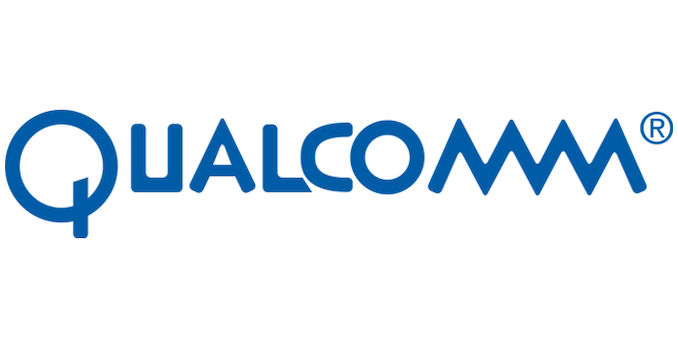

 Quote
Quote

_575px.jpg)



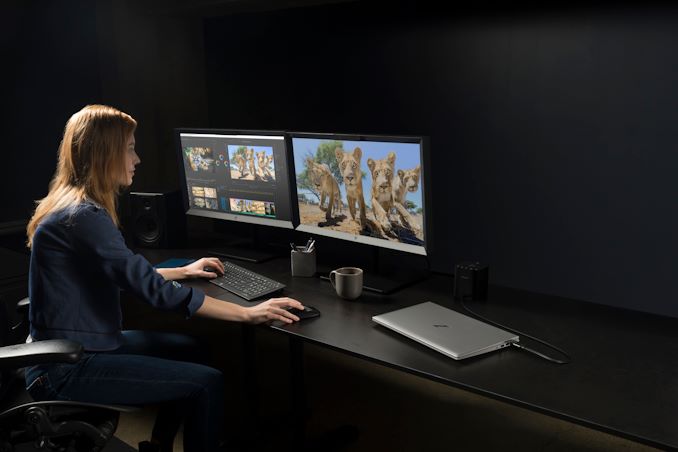
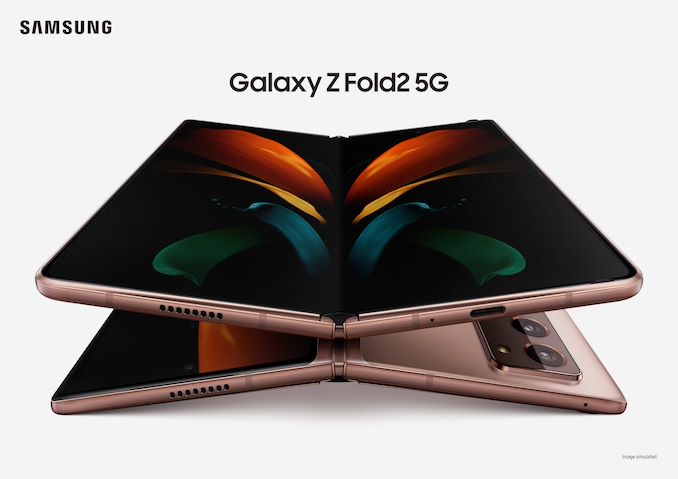

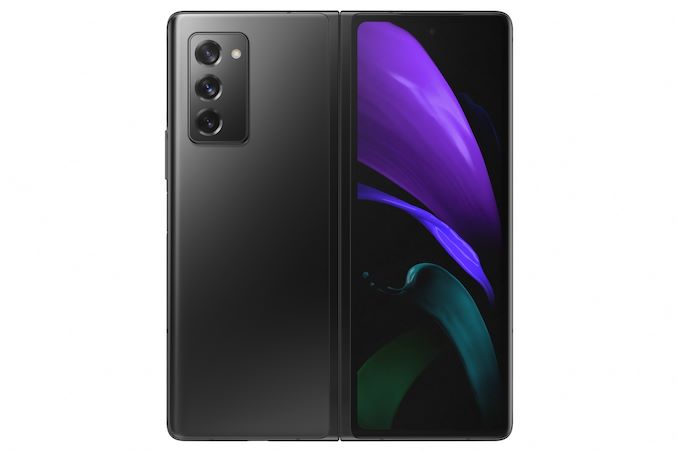
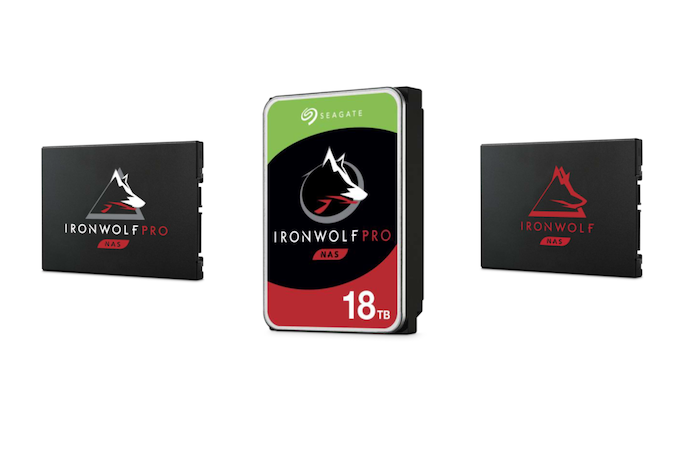
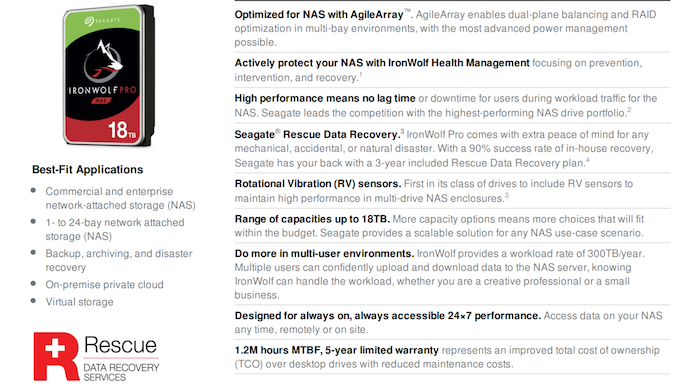

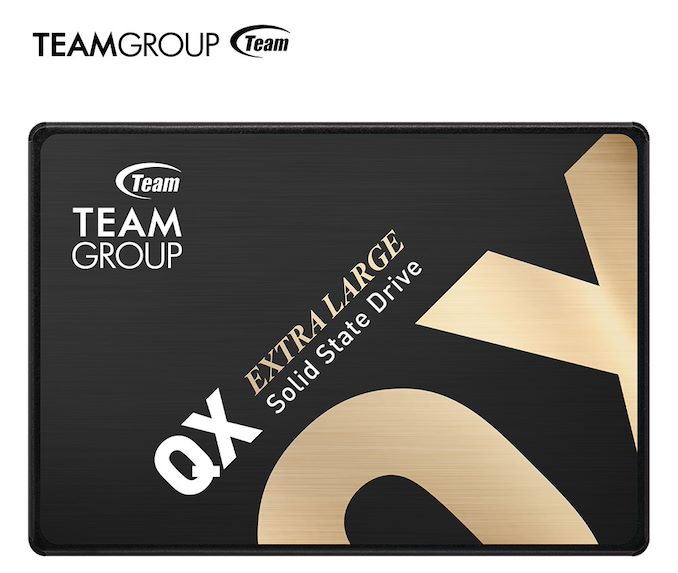
















Bookmarks